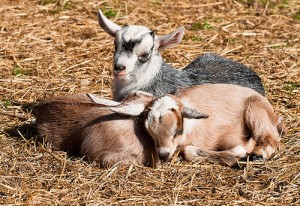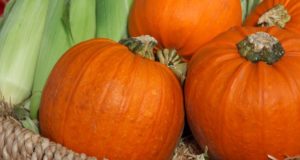Winter is here, and all of your goats and sheep are tucked away for a long winter’s nap. It’s time to relax on the homestead, right? Well, not really. This is the time to prepare for those blessed events soon to come in the late winter and early spring.
 It is time to prepare for the kidding/lambing season. Those babies you planned for and meticulously arranged will be arriving soon— and sometimes in less-than-comfortable weather. While you could wait until the last minute, the nice thing about getting started early is you can relax and enjoy the anticipation.
It is time to prepare for the kidding/lambing season. Those babies you planned for and meticulously arranged will be arriving soon— and sometimes in less-than-comfortable weather. While you could wait until the last minute, the nice thing about getting started early is you can relax and enjoy the anticipation.
If this is your first kidding, lambing, or even foaling season, there are a lot of things you will need to get together. It is also important to review the process so you are prepared for any emergency. While the weeks leading up to the anticipated births and labor in general seem to drag on, when things go wrong during the actual birth, they go wrong quickly, and time is of the essence. There will be no time to cruise the Internet for advice on how to handle a breech, tangled legs, head in the wrong position, or any of the other problems that can occur.
It is impossible to know what will happen ahead of time, so you have to know what the possibilities are and how to correct them. The good news is that most of the birthing problems that occur can be fixed, some more easily than others, as long as you are there and ready.
Fias Co Farms has an excellent page depicting both normal birthing positions and how to handle abnormal positions. These pictures are relegated to goats, but are the same for any other typical livestock breed from sheep to cows to horses.
Birthing Stalls
No matter where you keep your animals during the winter— in a big barn, lean-to, or open field with windbreaks and shelters—you will need someplace to bring your girls who are nearing parturition (birth). Not only will a birthing stall offer privacy and safety for them, it will make things a lot more comfortable for you. The stall needs to be large enough for the animal to move about during labor, and it should be covered well with straw.
Straw is the best bedding material for a birthing stall. It’s a little bit of a pain to keep clean, but it prevents newborns from inhaling small shaving particles, it won’t stick to afterbirth or wet kids, and it generally provides more insulation and warmth.
Your birthing stall does not have to be fancy. You can even make one out of plywood in a garage (or any other building). It is even possible to build one in a porch or, in an emergency for smaller animals, in a basement (although it can be hard to get the animals up and down the stairs).
Keep in mind that if you bring animals into a house where the temperatures are warmer and more stable than outdoor buildings, you may have to keep them inside for the remainder of the cold weather, so a birthing stall inside a house is only an option if there are no other possibilities. I often do bring any babies I am going to bottle feed into a room in the house—usually my basement, set up for the purpose—and the kids stay inside until spring when I can begin to harden them off to colder but milder temperatures. It is just easier on me to feed bottle babies inside than to go out to a barn every couple of hours and do it.
If you are going to breed a large number of does or ewes, you’ll probably want to keep the newborns in a barn or outbuilding even if you are bottle-feeding. Keep in mind that once they are dry and on their feet, young livestock are perfectly adapted to surviving the cold as long as the area is free of drafts. However, it may be a good idea to have a few small blankets on hand for those very small newborns that have trouble regulating their body temperatures for the first few days.
What to Do Before Kidding Season
Give your goats, sheep, cows or horses a good hoof trim and get them all settled in. It is much easier on them to do the trimming now before they get heavy with their babies.
About five weeks prior to the scheduled birth, give your doe, ewe, or horse a shot of selenium. This can be obtained at most livestock supply stores or from your veterinarian. It protects against spontaneous abortions and weak babies due to a lack of selenium in feed sources common in many areas of the U.S. This is also a good time to check your doe’s, ewe’s, mare’s, or cow’s feed and start giving them a pregnancy mix designed to help provide enough nutrients for both mom and the growing fetus.
At four weeks prior to the birth, ask your vet about giving an enterotoxemia and tetanus vaccine to protect the newborns from common, serious, and deadly infections.
If you live in one of the areas of the U.S. that is seriously deficient in selenium, give a second shot of the nutrient two weeks prior to birth.
One week prior to the scheduled arrival of your anticipated babies, trim your nails. You may have to go in to assist, and rough, ragged, or long fingernails can cause damage. Shave your doe’s, ewe’s, mare’s, or cow’s udder to get rid of hair that can hold dirt or debris that the newborn searching for the teat for the first time may ingest. Now is the time to start putting the soon-to-be mom in the kidding stall you prepared so she gets used to it and is ready for her new arrival. It will also keep her close at hand so you can watch for signs of labor. Congratulations on your new arrivals!
©2011 Off the Grid News
 Off The Grid News Better Ideas For Off The Grid Living
Off The Grid News Better Ideas For Off The Grid Living



